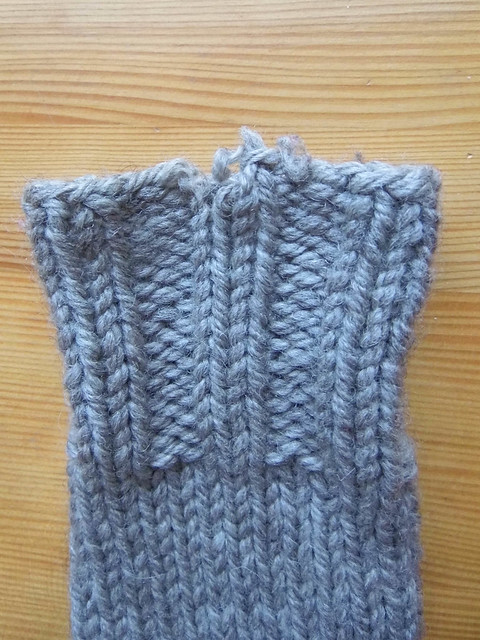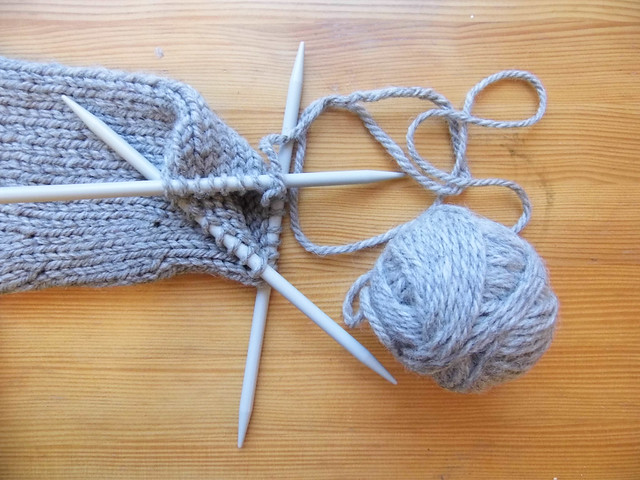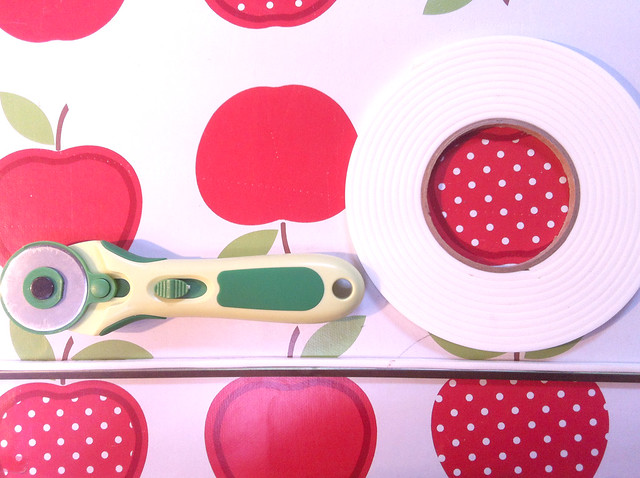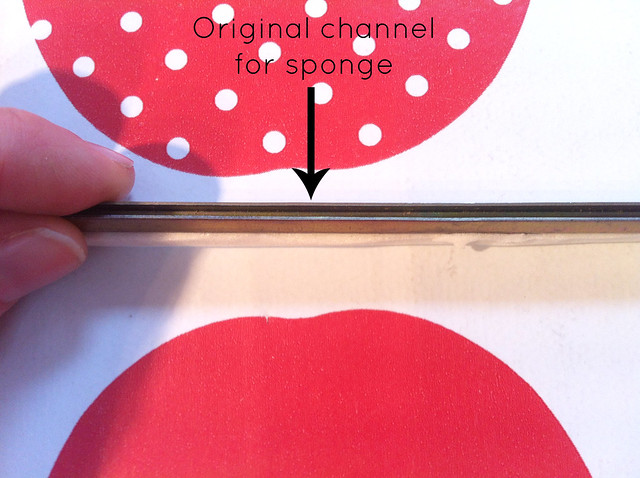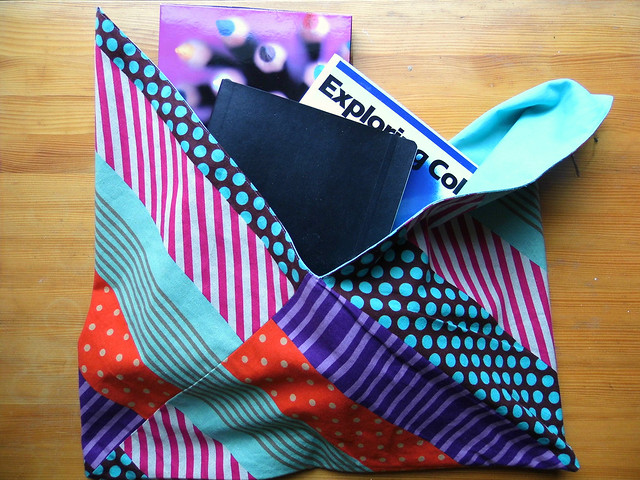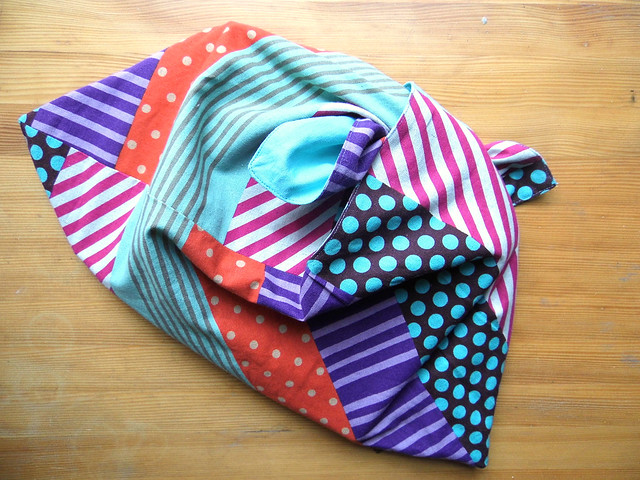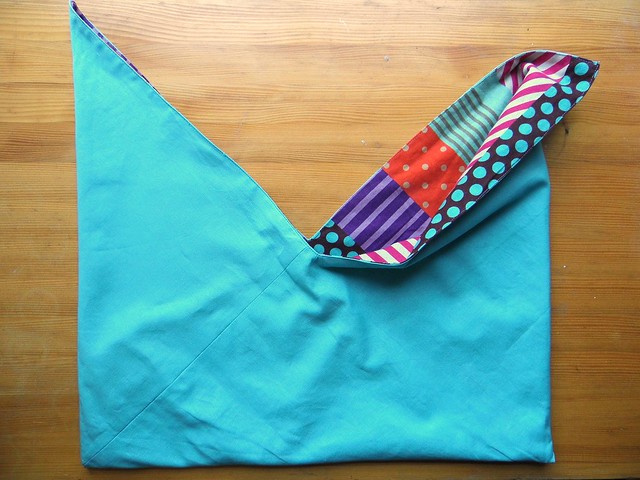There’s a window of time between October and February when my ‘Owls’ jumper is the only thing in my wardrobe that is guaranteed to keep me warm. It’s by no means my best knitting (some very visible, very dodgey short-rows) and after five years, it’s bobbely and stretched out at the elbows, but I still dig it out every year without fail.
So, when I pulled it on for the first time last autumn, I was devastated to find one of the cuffs had split and started to unravel at the cast-on edge.
I was at a loss about how to fix it, since a straightforward darn wasn’t going to work, and the sleeves were knitted from the cuff up, so I couldn’t easily unravel the broken edge and re-knit it.
I picked my colleague’s brain about it, and we decided that the only solution would be to cut the whole cuff off and re-knit it from the sleeve down. Terrifying, but do-able!
First, I put a safety line in by threading contrast coloured yarn through every stitch around my sleeve, a row below the beginning of my cuff.
I then took a deep breath and cut away the cuff a couple of rows above my safety line (I was wary of accidentally cutting through my safety line stitches and losing them).
I then put the saved stitches on double pointed needles and ‘tinked’ back one round so I would have a long enough tail to join to my new ball of yarn (I had yarn left over from knitting this jumper, but I could have re-used the yarn from the old cut-off cuff)
Since I didn’t know where my original round started when I first knitted the sleeve, and I would be knitting in the opposite direction to the original (down the sleeve, rather than up the sleeve), I made sure I started my round on the side of the sleeve facing down when I wear it, so the ‘jog’ in the pattern wouldn’t be so obvious.
I then re-knitted the cuff following the original pattern. My tension was very different to the original (despite using the same needles and yarn…) so I found I needed fewer rows to get it to the same length as the other cuff.
After a bit of blocking, you can hardly tell the difference between the new and the original (New cuff on the left, original cuff on the right), and my jumper is ready for the next cold winter!

